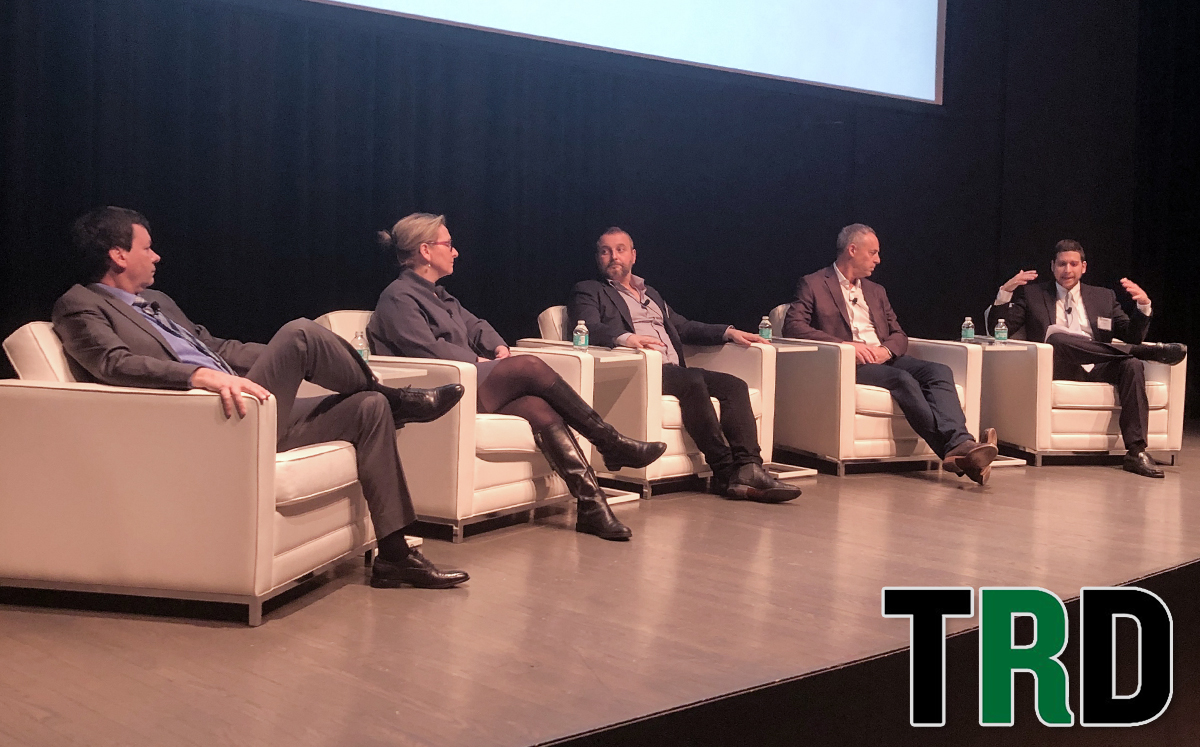Two of the largest developments ever proposed in Chicago might have won “final” approval last week, but the real work is just getting started.
Not only do Sterling Bay and Related Midwest still need to actually build the sprawling Lincoln Yards and The 78 projects, but there are plenty of hurdles that could be thrown in their way, a panel of experts said Tuesday at The Real Deal’s Chicago’s State of the Market.
“There’s really no such thing as ‘final’ anything anymore,” Alderman Brian Hopkins (2nd) said. That was apparent than with the pre-event news of a new lawsuit challenging public incentives for Lincoln Yards.
“We’re going to wind up in front of a judge. Who knows how long it’s going to take?” Hopkins said.
The discussion on how Chicago’s new crop of megaprojects will reshape the real estate market also featured Farpoint Development Principal Scott Goodman, whose firm is set to lead the transformation of the long-vacant Michael Reese Hospital site on the South Side into the Burnham Lakefront development.
Goodman said Farpoint and its partners have been spending a lot of time working with neighborhood groups and city officials in hopes of ironing out any issues at the project’s outset — and avoid the tortuous approval process that Sterling Bay went through.
“We are trying to avoid the experience of Lincoln Yards,” Goodman said, responding to a question from TRD reporter Alex Nitkin, who moderated the panel. “We’re trying to solve for a lot of those problems up front.”
Goodman said the Burnham Lakefront will have a focus on green energy and advanced technology. The latter is essential for such large self-contained “villages” like it and the other developments, said Alex Samoylovich, co-founder and Chief Executive Officer of Cedar Street Companies.
“These villages have the opportunity to be smart villages,” Samoylovich said.
Sheryl Schulze, principal with Gensler Chicago, said the projects will have to be walkable. They will also need to have amenities that can be accessed throughout the day by the whole community, not just the workers occupying the office buildings during the day, Schulze said.
“These developments need to have that 24/7 vibe,” Schulze said. “You have to look at who’s going to go there, why are they going there and what are they going to do when they get there.”
Hopkins, whose ward includes the riverfront Lincoln Yards site, said he ran on a platform of opening up the North Branch Industrial Corridor to development, a move that became a reality when the city in 2017 approved a plan to allow more non-industrial uses in the area.
Hopkins said the formerly industrial swath along the river served as a gap between the bustling Lincoln Park and Bucktown neighborhoods.
“It’s obvious looking at this hole in the doughnut that something has to happen here,” Hopkins said.
But not everyone’s on board with Lincoln Yards, or the TIF district meant to support it.
Hopkins said developers and aldermen alike should be prepared to deal with a shift in the perception of development in the city, with a new mayor joining other newcomers at the county and state levels — and six Democratic Socialists set to join the City Council.
“We’re starting all over. We’re in uncharted territory,” he said.
The political headwinds will be just one of many challenges for Sterling Bay, Related and other megaproject developers as they work to fill their sites with gleaming office towers, amenity-rich residential buildings and recreational space, Samoylovich and Goodman said.
“There’s so much work to do. There’s so much inherent risk. Until you’re really into the project you don’t really know what your costs are,” Goodman said. “I don’t think (people) really understand we don’t really make money until the very end.”
But Samoylovich said the end result will be worth it for the developers — and the city.
“If people don’t like growth, look at what Chicago looked like 100 years ago. Is that what we want Chicago to look like today?” Samoylovich said.
